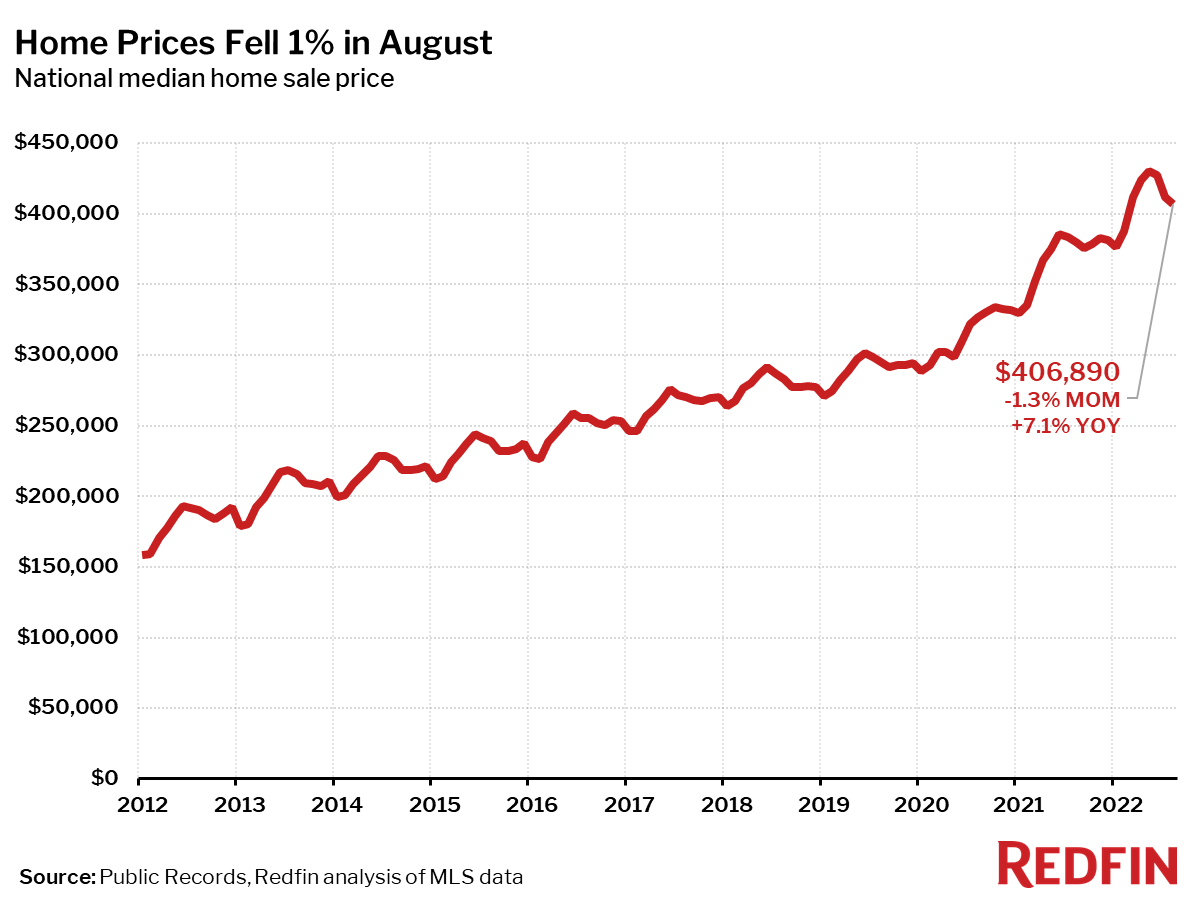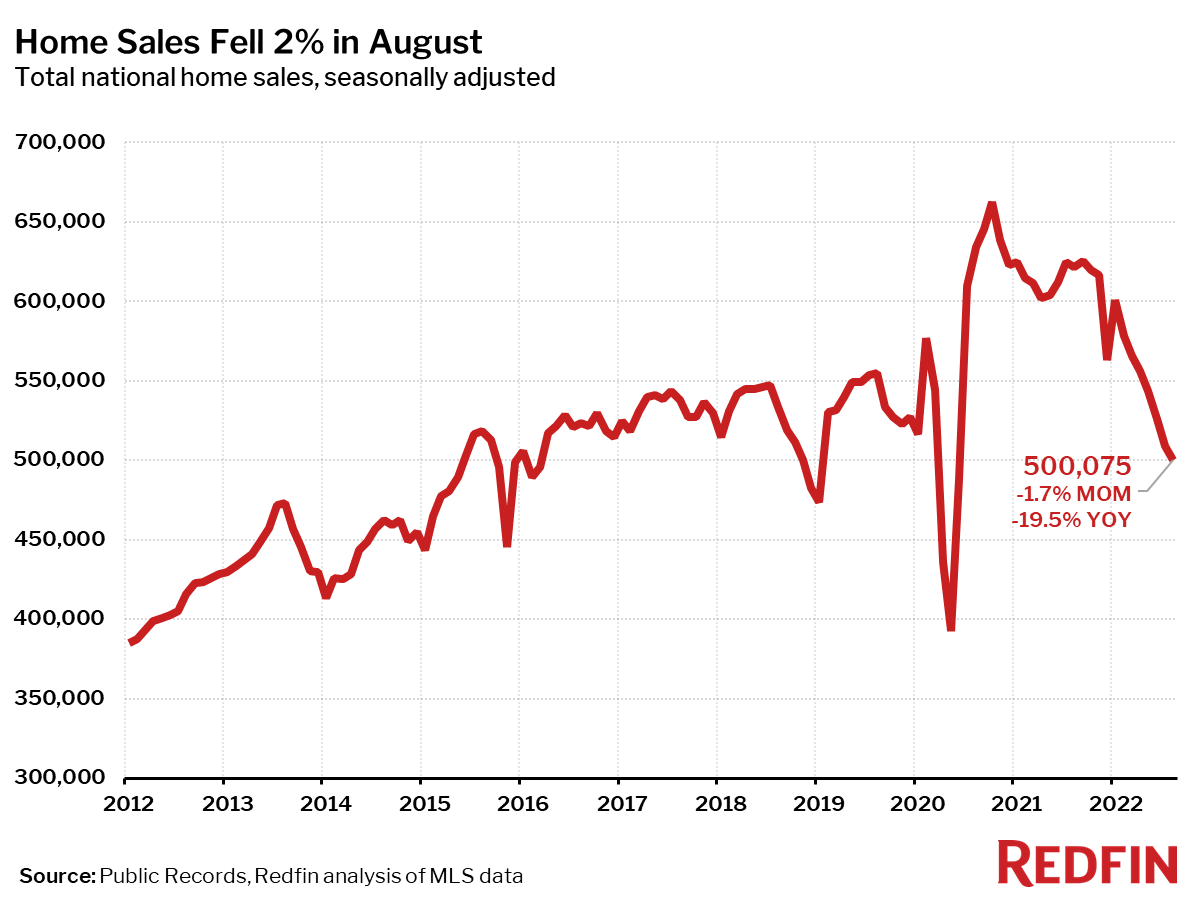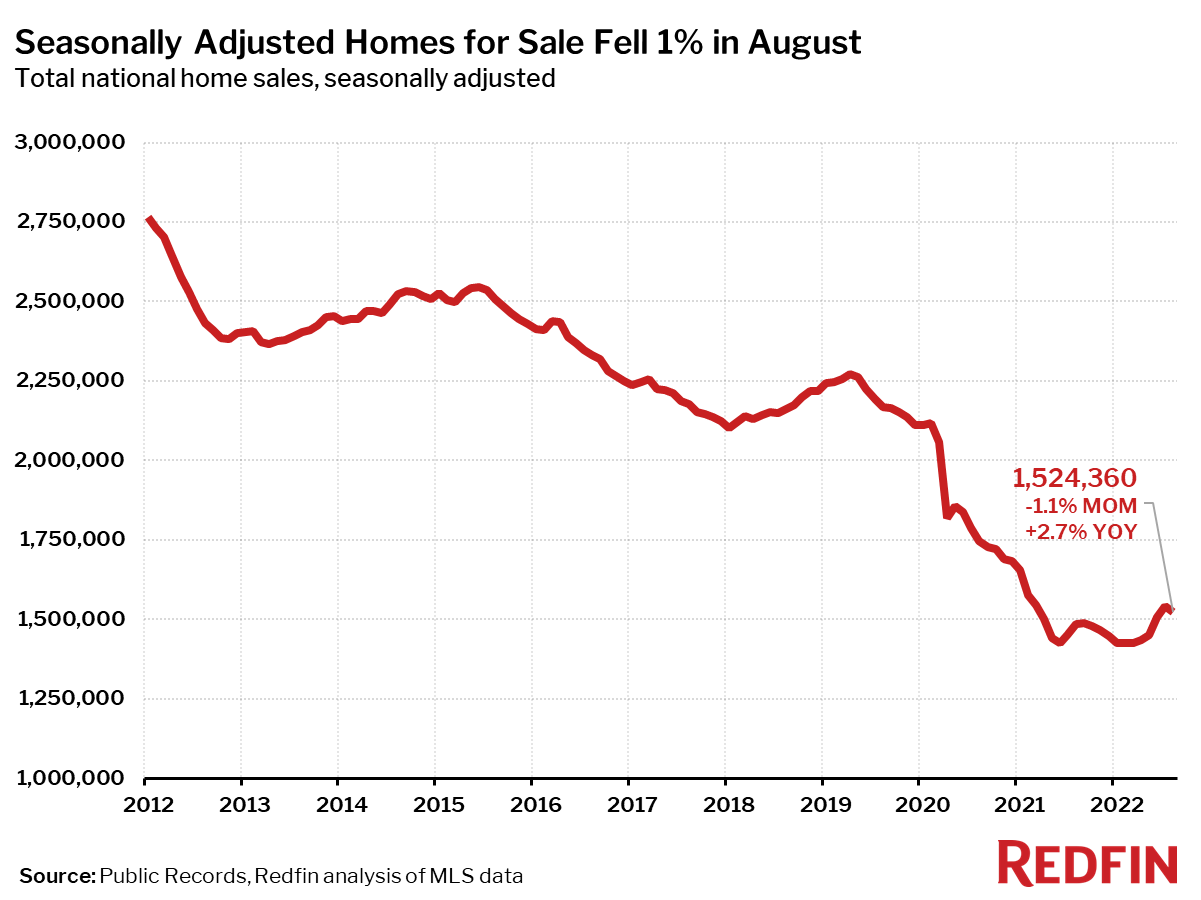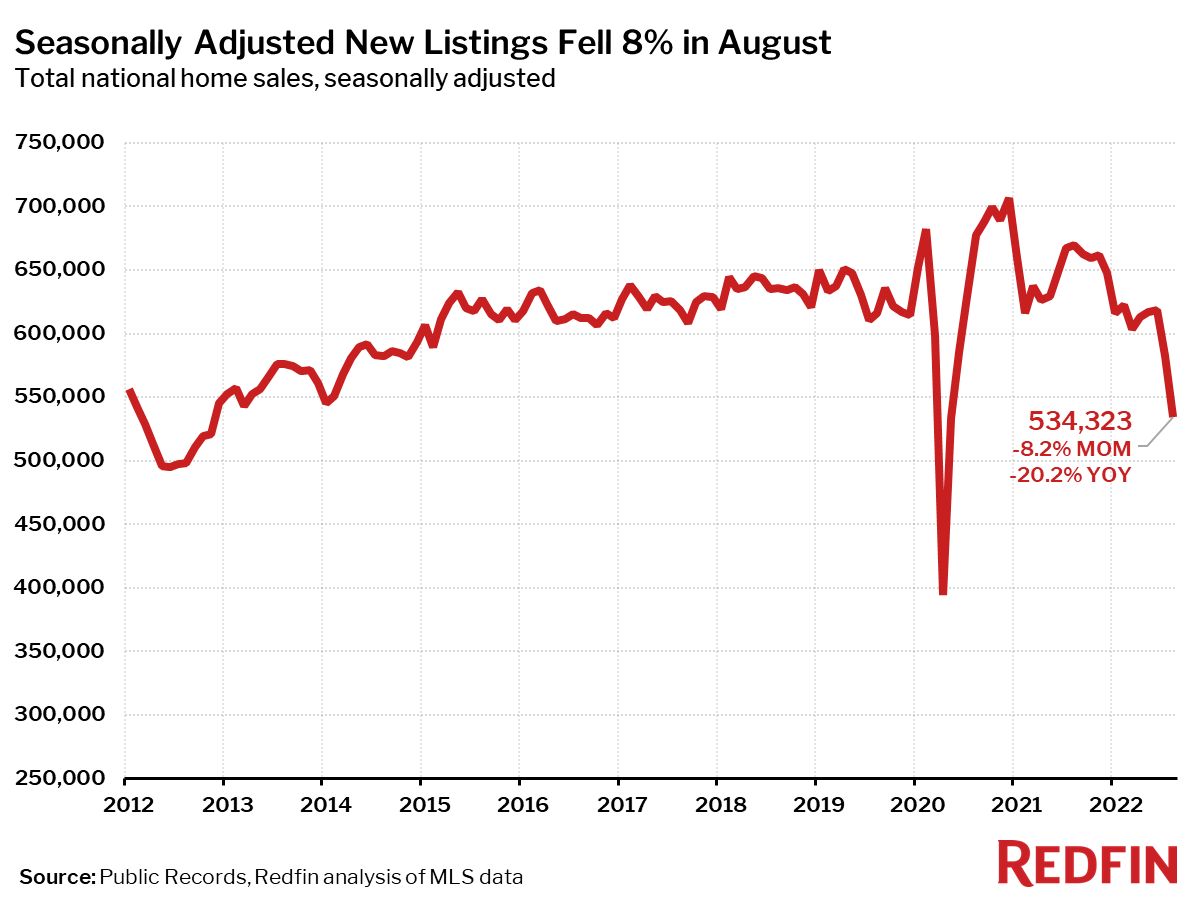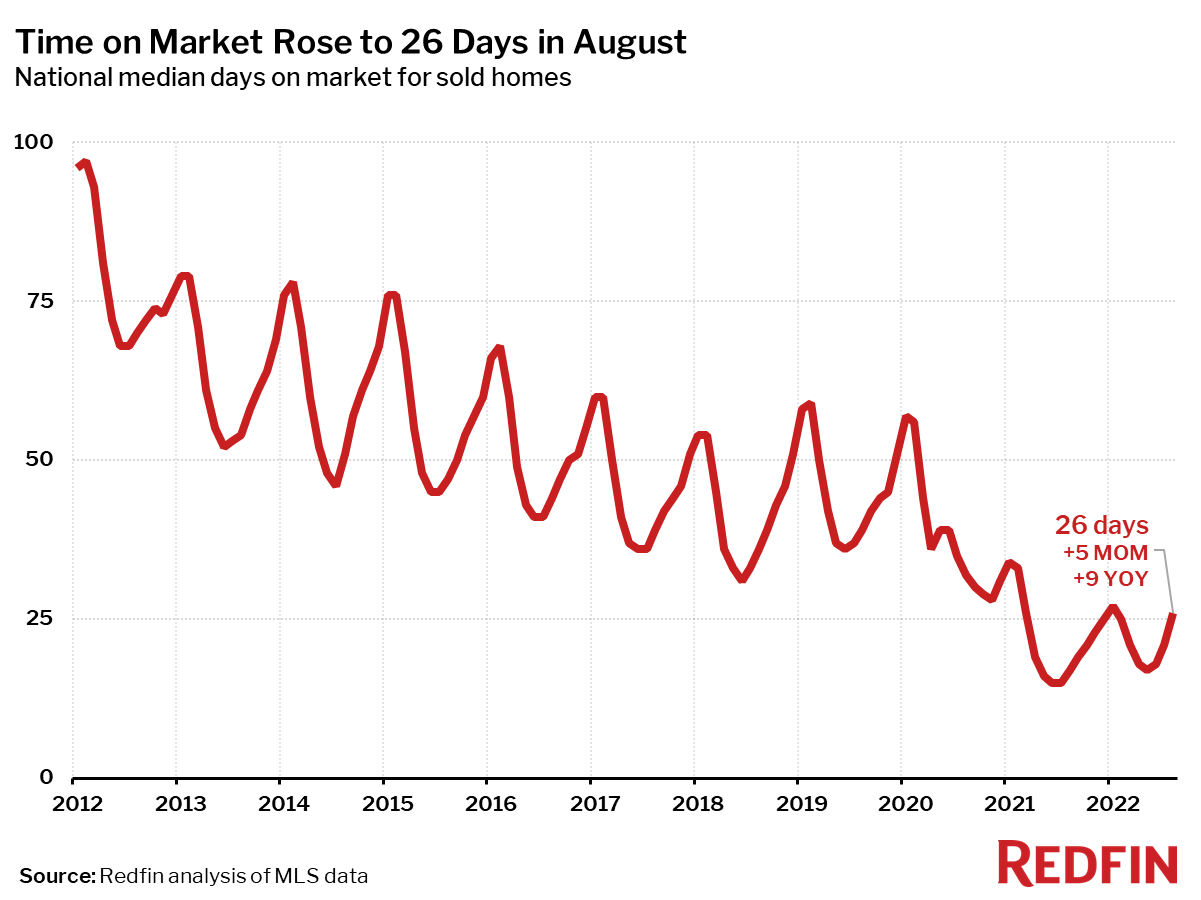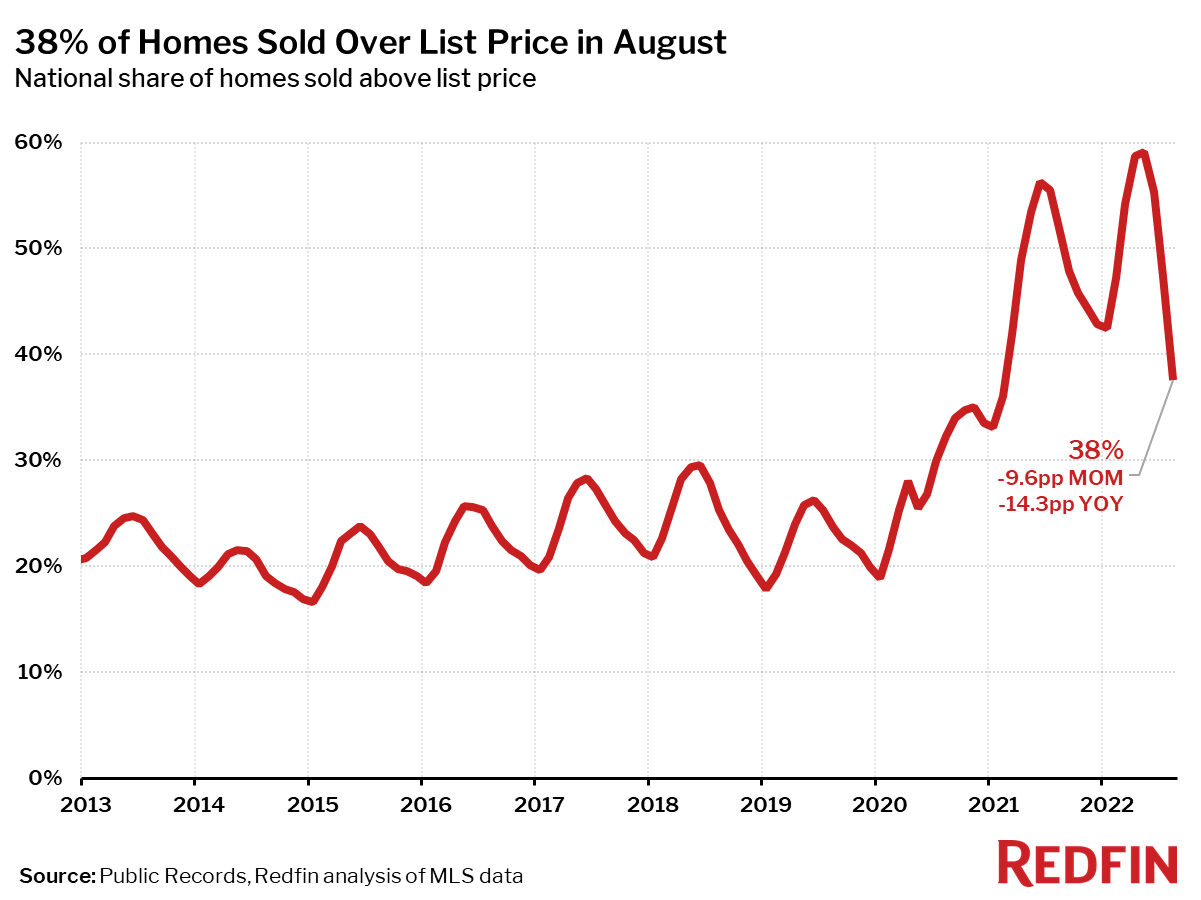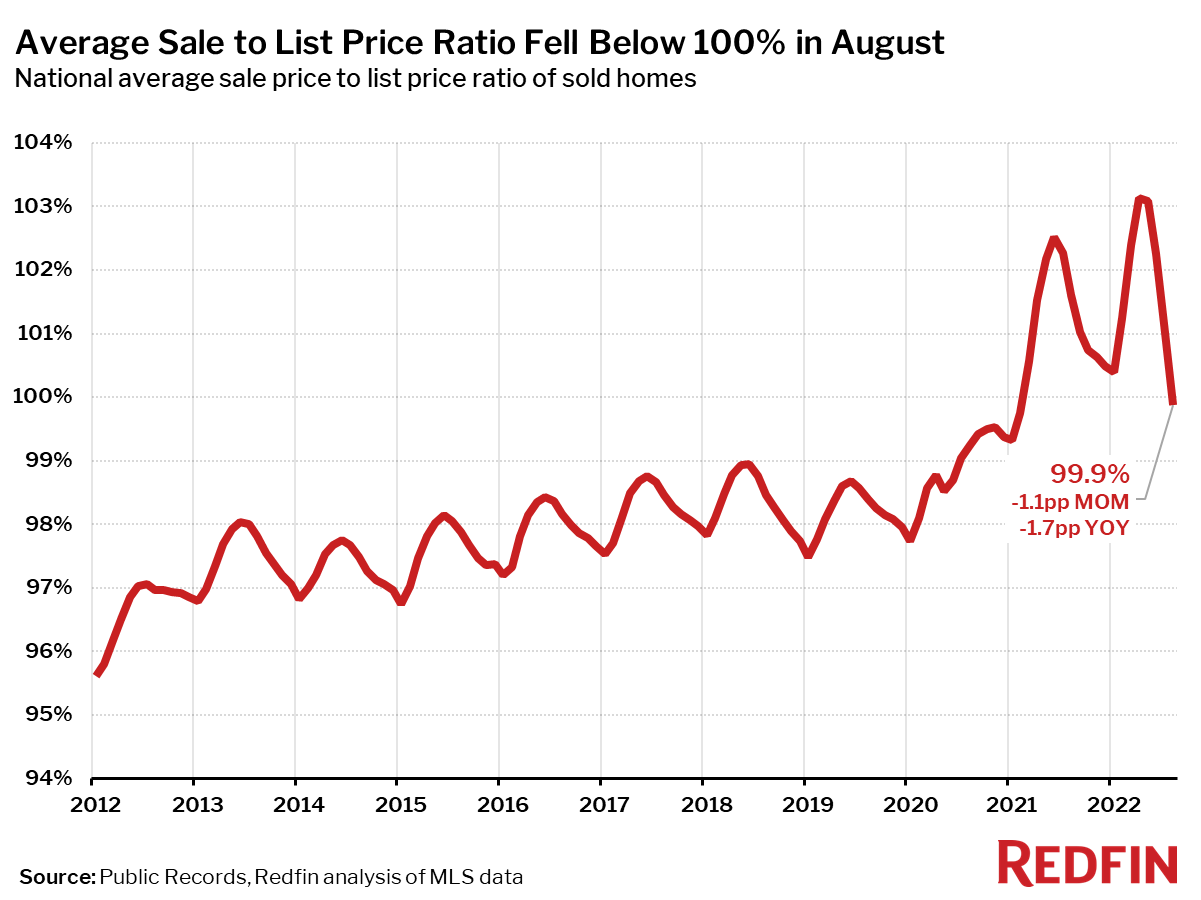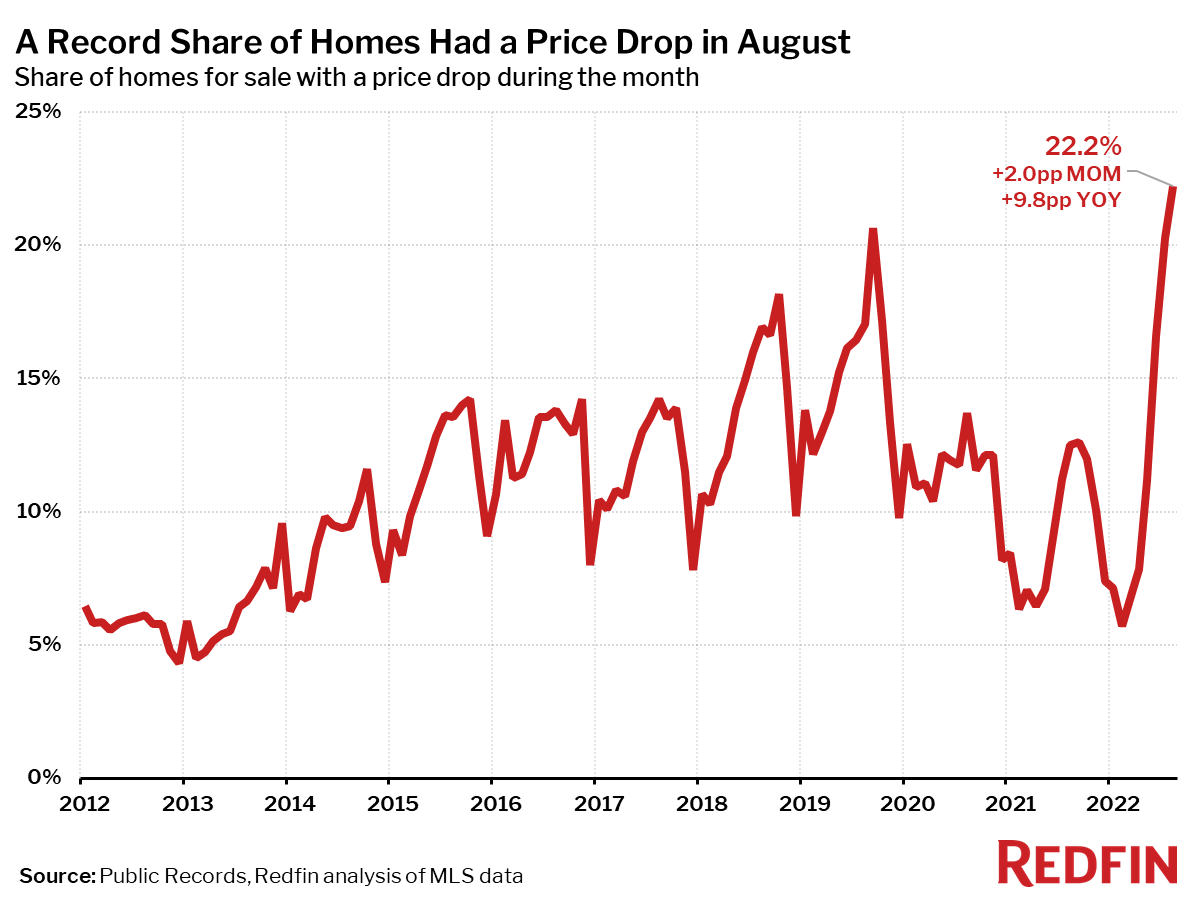Seasonally-adjusted new listings of homes for sale fell 8% from July to August to their lowest level since May 2020, when the housing market was paralyzed by the onset of the COVID-19 pandemic. Prior to the pandemic, we hadn’t seen so few homes hit the market since November 2012.
Mortgage rates climbed from 5% at the beginning of August to 6% by the end of the month, pushing many homebuyers out of the market. This sharp decrease in demand gave the buyers who were left some additional negotiating power and softened home prices a bit, but caused many potential home sellers to hold off on listing. As a result, the market as a whole is relatively balanced between buyers and sellers, but there’s very little activity in terms of homes being listed and sold.
“When mortgage rates were below 3%, sales and home prices soared. The market was like a game of musical chairs with buyers vying for too few homes,” said Redfin Chief Economist Daryl Fairweather. “As mortgage rates approached 6%, almost everyone left the party. Now the market is more like a middle school dance where a small number of buyers and sellers are pairing up during a slow song.”
While we may be in a housing recession, the slowdown in sales is not a sign of a bubble bursting, Fairweather went on to explain:
“The bottom line is that homeowners don’t need to sell in this environment. They locked in rock-bottom mortgage rates last year and are sitting on piles of equity. The jobs market remains very strong, so there’s little risk that mortgage delinquencies or foreclosures will rise significantly. It would take a severe—not soft—recession to send homeowners into distress. We will have to wait and see if the broader economy steers toward normalcy or recession in the upcoming months.”
Scroll down for national charts and market-by-market breakdowns. For downloadable data on all of the markets Redfin tracks, visit the Redfin Data Center. Refer to our metrics definition page for explanations of all the metrics used in this report.
